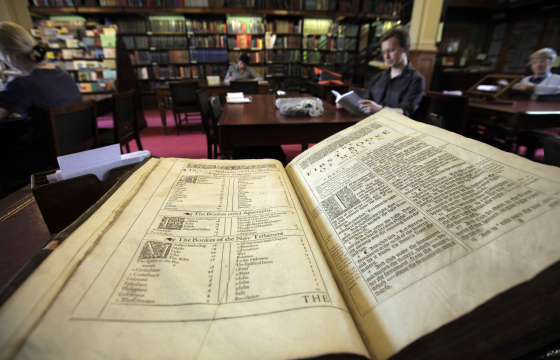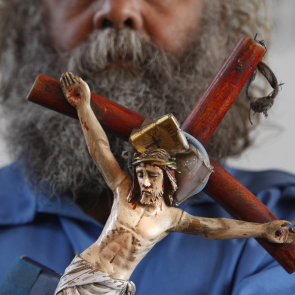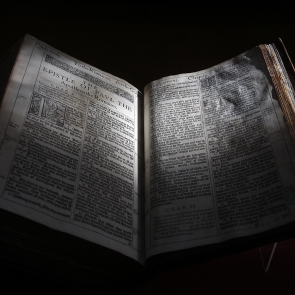A 400-year-old notebook discovered in the archives of a Cambridge college, about the size of a modern paperback, wrapped in a stained piece of waste vellum, is being heralded as the biggest clue to the formation of one of the most important bodies of work in the English language.
The 70 pages of handwritten text is a draft text of a section of the King James Bible and contains vital clues as to how scholars grappled with translating a well-known text in ancient languages into the modern English we understand today.
The importance of the King James Bible is not just as an ecclesiastical text but also as a comprehensive record of the birth of the most used language in the world today, modern English.
Between 1300 and 1700, and accelerated by the arrival of the printing press in Britain in 1476, the English language began to change from Old and Middle English - a mish-mash of Celtic, Anglo Saxon, Germanic and Norman French into the language we understand today.
However, the operators of the printing presses were often the translators from the more regular languages of print - Latin, Greek and Hebrew - and that led to an erratic and illogical attempot to standardise the English language in print.
But, when King James I abolished the death sentence for translating the Bible into English (a byproduct of England’s break from Rome), he simultaneously commissioned a new version of the bible to be created by a translation committee of 50 scholars.
The new version of the bible, first published in 1611, was designed to support the newly-founded Church of England against the more Puritanical influences abound in earlier English versions of the bible.
Although around 200 first editions of the bible are still in existence, there has been very little documenation found of how the scholars decided on the final version.
 A first edition of the King James Bible at the British Library, one of only 200 known to still be in existence (PA)
A first edition of the King James Bible at the British Library, one of only 200 known to still be in existence (PA)
Last autumn Jeffrey Miller, associate professor of English at Montclair State University, New Jersey, US, found the notebook of a former master of Sidney Sussex College, Cambridge, Samuel Ward, and one of the original committee of scholars.
“It doesn’t exactly look like what you would expect in the earliest draft of a work that will become the most widely-read work of English writing of all time,” Dr Miller said.
The new notebook shines a light on the process of creating the bible. While it has been widely believed that the text was created by committee, Miller’s text shows that the scholars tackled the text on their own and were influenced by the rapid evolution of the English language around them.
“The governing concern is not to produce a beautiful work of English literature, but to produce something that’s as faithful to the original languages as possible,” Dr Miller told The Times of London. “I think it’s right that they want it to sound good and they want it to be clear. You can see Ward getting rid of things that he regards as redundancies in the earlier translations.”
The find was announced in the Times Literary Supplement. Nicholas Rogers, the archivist at Sidney Sussex, said the college would discuss putting the notebook on public display next year. It is currently held in a safe in the college’s Muniment Room.
“It’s extremely undistinguished-looking: it’s often quite hard to read because Ward did write in a very small hand,” Mr Rogers said. “But it is a document of great historical importance.”
KEEP UP TO DATE ON TWITTER...
Follow all the latest news and events from the Catholic world via The Tablet's Twitter feed @the_tablet




 Loading ...
Loading ...